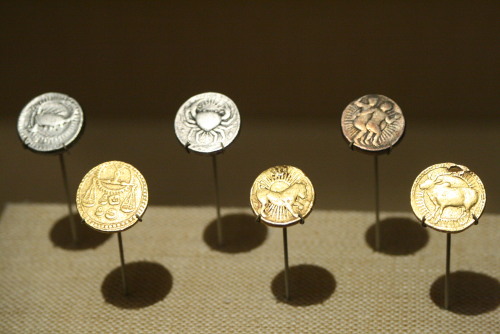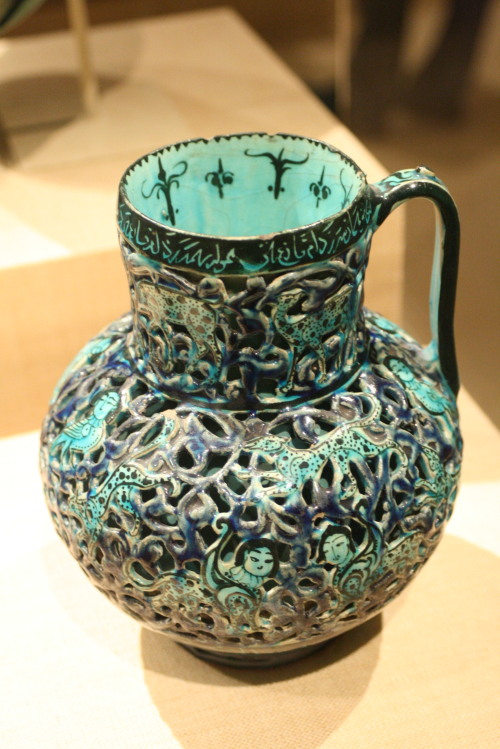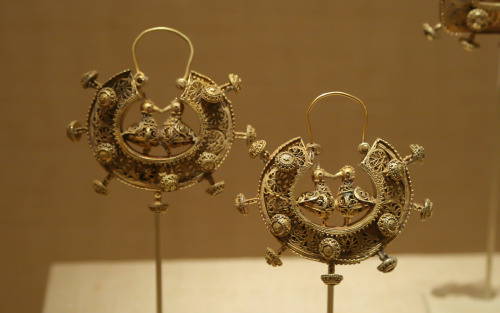#brass ivy design
Six Coins with Zodiac Signs
India
Mughal period (1526-1858)
These coins bear a zodiac symbols found on the other objects in the collection, but were not created for talismanic purposes. This sign instead corresponds to the month in which it was minted. In his memoirs, the Mughal emperor Jahangir recorded his inspired idea for the unusual design of this and other coins depicting the signs of the zodiac
Post link
Pierced Jug with Harpies and Sphinxes
Ewer
A.H. 612/ A.D. 1215–16
Iran, probably Kashan
Stonepaste; openwork decoration, polychrome painted under turquoise glaze
This jug has a carved and pierced outer shell that surrounds a solid inner container. The openwork with harpies, sphinxes, quadrupeds, and scrolls was first painted with touches of black and cobalt blue, and then the entire jug was covered in a turquoise glaze. The Persian verses around the rim were written by the poet Rukn al‑Din Da'vidar Qummi, and an anonymous love poem near the base includes the date of production.
Post link
Earrings
Iran
Seljuq period
1040-1196, 11th century
Gold, filigree and granulation
This pair of crescent-shaped earrings (see also 2006.273b) is constructed entirely with gold wire and filigree; details of the decoration are achieved through the openwork filigree and fine granulation. The earring has a crescent-shaped body created as a box-construction: on top and bottom, stripes of gold with granulation at the edges hold two openwork filigree bands on the sides, each containing a row of ten small decorative medallions. Two confronted birds conjoined by their beaks and chests stand on tiny feet in the middle of the crescent; their bodies, wings, and necks are in filigree work while their heads were created with gold sheet and granulation on the surface. Seven prongs formed by a short term and a rather large cap decorated with granulation protrude from the lower strip at regular intervals; five additional identical prongs extend diagonally from the exterior openwork band, corresponding to the outer and more visible side of the earring. The stem of the prong is pierced, therefore suggesting that strings of pearls were once used to decorate these objects. The looped clasp made of plain gold wire completes the earring.
Post link





